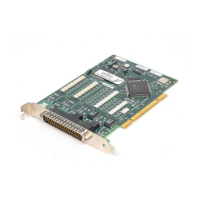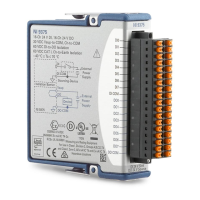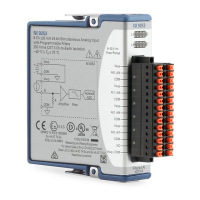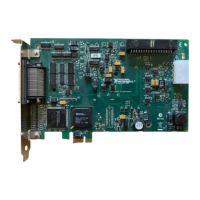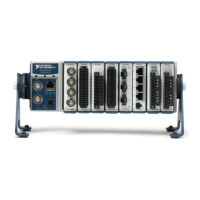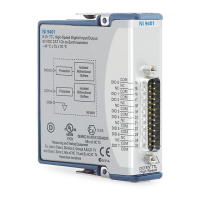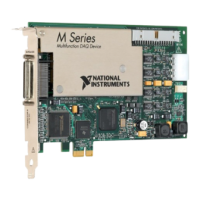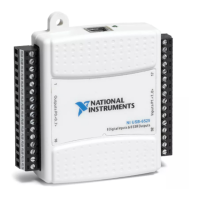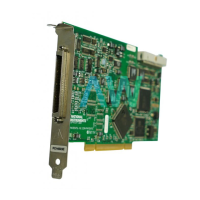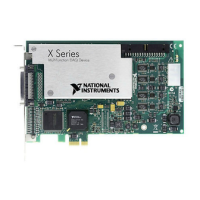Chapter 6 Digital I/O
© National Instruments 6-25 X Series User Manual
The Change Detection Event signal can do the following:
• Drive any RTSI <0..7>, PFI <0..15>, or PXI_STAR signal
• Drive the DO Sample Clock or DI Sample Clock
• Generate an interrupt
The Change Detection Event signal also can be used to detect changes on
digital output events.
DI Change Detection Applications
The DIO change detection circuitry can interrupt a user program when
one of several DIO signals changes state.
You also can use the output of the DIO change detection circuitry to trigger
a DI or counter acquisition on the logical OR of several digital signals. To
trigger on a single digital signal, refer to the Triggering with a Digital
Source section of Chapter 11, Triggering. By routing the Change Detection
Event signal to a counter, you also can capture the relative time between bus
changes.
You also can use the Change Detection Event signal to trigger DO or
counter generations.
Digital Filtering
You can enable a programmable debouncing filter on each digital line on
Port 0. When the filters are enabled, your device samples the input on each
rising edge of a filter clock. X Series devices divide down the onboard
100 MHz or 100 kHz clocks to generate the filter clock. The following is
an example of low-to-high transitions of the input signal. High-to-low
transitions work similarly.
Assume that an input terminal has been low for a long time. The input
terminal then changes from low-to-high, but glitches several times. When
the filter clock has sampled the signal high on two consecutive edges and
the signal remained stable in between, the low-to-high transition is
propagated to the rest of the circuit.
Artisan Technology Group - Quality Instrumentation ... Guaranteed | (888) 88-SOURCE | www.artisantg.com

